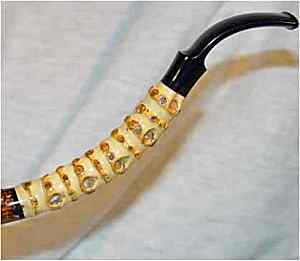

Decorating Materials
Today, the use of decorating materials is very useful in pipe making again. Different "bio materials" and fossil substances are used as well as metal. At first, the use of such materials has practical reasons: The prolongation or extension of the shank and the protection of the transition zone between shank and stem.
The use of bamboo and horn already has a long tradition. It goes back, essentially if one refrains from regional features like in Japan, to Sixten Ivarsson, for reasons for the thrift. At the time after the 2nd World War he primarily used shank extensions of bamboo and horn to manufacture as many bowls as possible from one piece of the rare briar. Sixten Ivarsson was known to be very thrifty. While another carver would have only one pipe, Sixten made three pipes from the similar sized piece of briar. Today, good bamboo and good horn is almost as are rare than good briar. Particularly at the bamboo-pipes it is important for the "value" of the pipe, how many "knuckles" per length unit the bamboo piece shows.Today, Tom Eltang is the grand-master of bamboo-pipes next to Satou and Tokutomi from Japan.


A very rare 10-knuckle bamboo, naturally
bented (left), and another, very nice, straight 6-knuckle bamboo (right),
Two highgrade pipes by Tom Eltang
The use of horn requires great manual fate and primarily patience. Hardly another material shows such volume fluctuations as horn if it hasn't matured properly. Ugly steps between wood and horn are then the result, which often appears after finishing the pipe for sale. Wonderful work with horn makes Bo Nordh, Former, Bjoern of Sweden and Cornelius Mänz. Horn is used also as decorating material in mouthpieces through which a purely "visual" shank prolongation is caused.
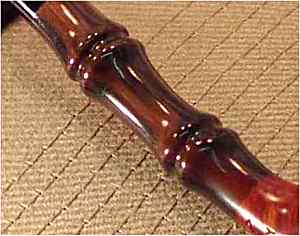
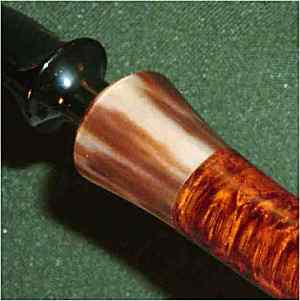
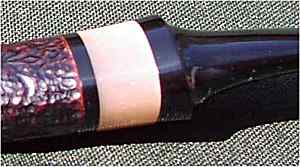
A "horn-bamboo" by Cornelius Mänz, a horn shank extension by Former and a horn-inlay on the stem by Bengt Carlson
Initiated by Lars Ivarsson and Jess Chonowitsch, little rings made of bright materials are of great popularity today. These rings are made of mammoth ivory or bright decorating woods like box-wood or birch. Beautiful rings also like to use Wolfgang Becker, Cornelius Mänz, Kent Rasmussen, Bengt Carlson or Tom Eltang next to Lars Ivarsson. Bone also can serve as decorating material well, but the processing is a very bad smelling procedure.
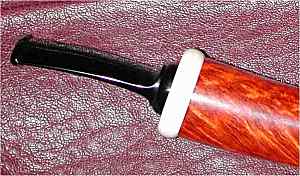
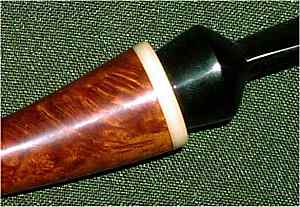
Nice rings from Mammoth-Ivory (left, Wolfgang Becker) and Bone (right) by Cornelius Mänz
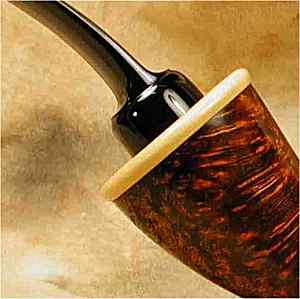
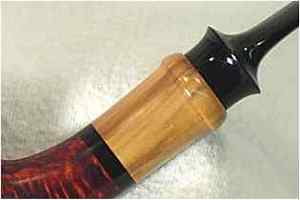
A Boxwood ring at the shank (Wolfgang Becker) and a nice Boxwood shank extension by Cornelius Mänz
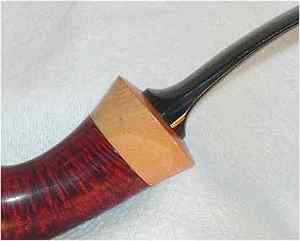
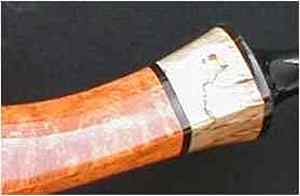
Boxwood (left, Cornelius Mänz) and Birch (right, Kent Rasmussen) at the stems of the pipes
The use of ebony is rare in pipe making. Ebony isn't black generally. It shows a beautiful, blood-red, fine grain, but it contrasts badly with black pipe stems.
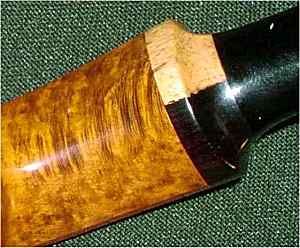
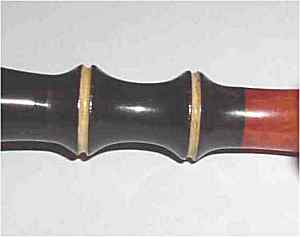
Bi-cloured Grenadill-Wood (a kind of ebony, left, Peter Hedegaard) and black Ebony with bright rings from Akazie (right, Cornelius Mänz)
The use of antlers is also rare. One can see it at Werner Mummert and Tyler Lane pipes, and, into a very extended way, on Sam Learned pipes.
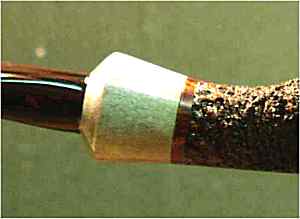
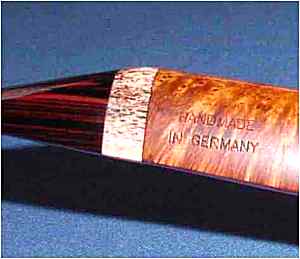
Antler, used as virtual shank prolongation (left, Tyler Lane, right; Werner Mummert)
The use of metals in pipe making is still much older than that one of the above-mentioned materials. Silver rings and the beautiful spigots are found at classic pipes from England and Ireland. It has to be assumed that at first metal rings were used in shank breaks or were attached "prophylactically" as reinforcements. The use of silver, gold and high-grade steel as a decorating element has gained acceptance in the meantime. The making of such works of art enjoys esteem just as high as the pipe making. E.g. we find excellent silver work at Les Wood and Ulf Noltensmeier (Bang). Brass and high-grade steel as well as titanium are also used. Daniel Jud specializes in the making of exactly fitted high-grade steel and titanium applications.
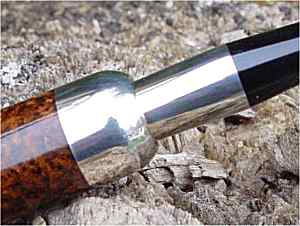
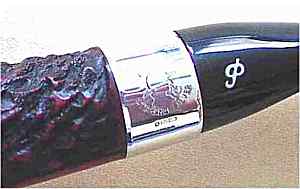
Silver-Spigot (left, Tom Eltang) an a Silver band (right, Peterson)
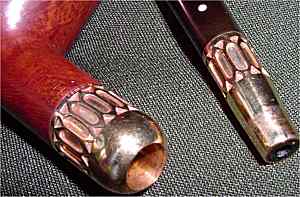
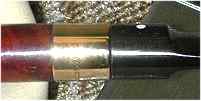
Gold-Spigot (left) und Gold band (right): Two nice Dunhill pipes from the past
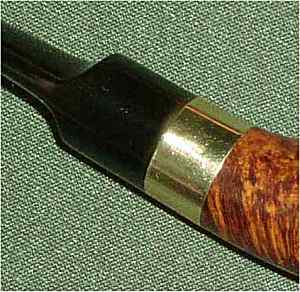
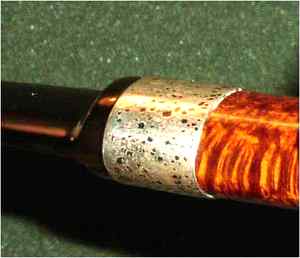
Golden ring on a golden- contrast stained pipe by Björn of Sweden (left.) and a nice Silver band by Phil Vigen (right.)
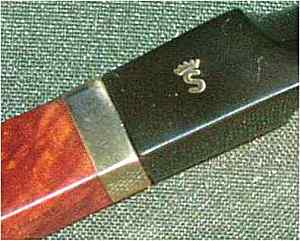
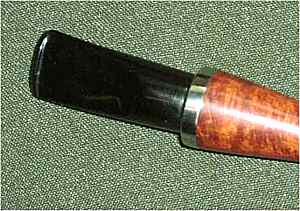
Brass (Stanwell, left) and high-grade steel (Daniel Jud, right)
Other decorating materials like amber, cultured amber or lapis lazuli are not unknown but comparatively found seldom in pipe making, however, lead to thoroughly amazing results.
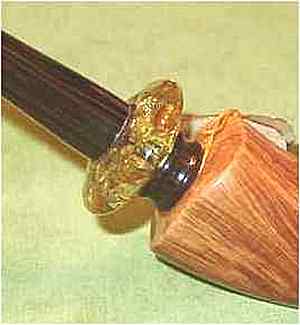
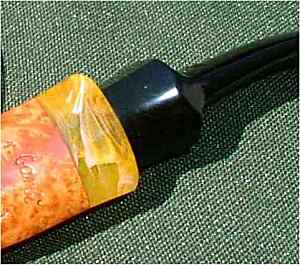
Genuine Amber (Jürgen Schmitt, left) on the stem and an amber-like acrylate for the extension of the shank by Rainer Barbi (right)